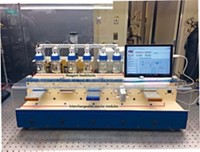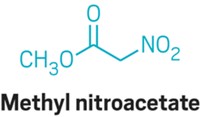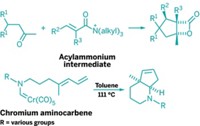Advertisement
Grab your lab coat. Let's get started
Welcome!
Welcome!
Create an account below to get 6 C&EN articles per month, receive newsletters and more - all free.
It seems this is your first time logging in online. Please enter the following information to continue.
As an ACS member you automatically get access to this site. All we need is few more details to create your reading experience.
Not you? Sign in with a different account.
Not you? Sign in with a different account.
ERROR 1
ERROR 1
ERROR 2
ERROR 2
ERROR 2
ERROR 2
ERROR 2
Password and Confirm password must match.
If you have an ACS member number, please enter it here so we can link this account to your membership. (optional)
ERROR 2
ACS values your privacy. By submitting your information, you are gaining access to C&EN and subscribing to our weekly newsletter. We use the information you provide to make your reading experience better, and we will never sell your data to third party members.
Synthesis
Making Ibuprofen In Three Minutes
by Bethany Halford
December 15, 2014
| A version of this story appeared in
Volume 92, Issue 50
In less time than it takes most people to check out at a drugstore, David R. Snead and Timothy F. Jamison can whip up the popular nonsteroidal anti-inflammatory drug ibuprofen. The MIT chemists report that by using continuous-flow processing, they are able to synthesize the compound in three minutes from basic building blocks (Angew. Chem. Int. Ed. 2014, DOI: 10.1002/anie.201409093). The synthesis demonstrates that continuous-flow procedures can handle extreme conditions and produce large quantities of active pharmaceutical ingredients without using massive reactors. In fact, the synthesis makes use of a harsh Friedel-Crafts acylation, employs the aggressive oxidant iodine monochloride, and the whole thing takes place in a reactor that’s about half the size of a standard lab fume hood. The five-stage process, which includes three bond-forming steps, one workup, and one liquid-liquid separation, produces about 8 g of ibuprofen in an hour. Snead and Jamison write that they were inspired by a 2009 continuous-flow ibuprofen synthesis from D. Tyler McQuade’s group at Florida State University. McQuade tells C&EN that the MIT effort shows that continuous-flow synthesis is “the future of chemical processing.”





Join the conversation
Contact the reporter
Submit a Letter to the Editor for publication
Engage with us on Twitter